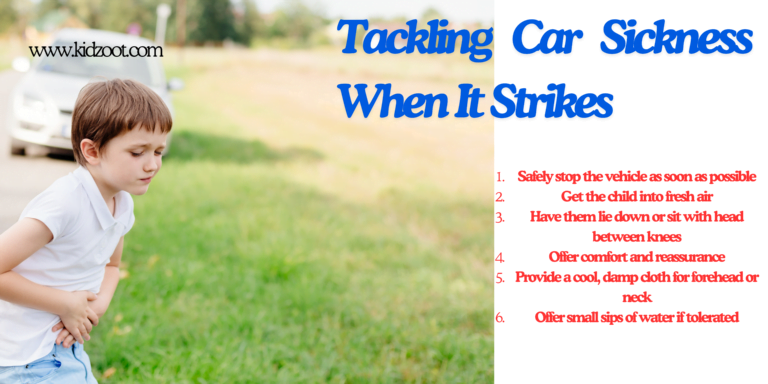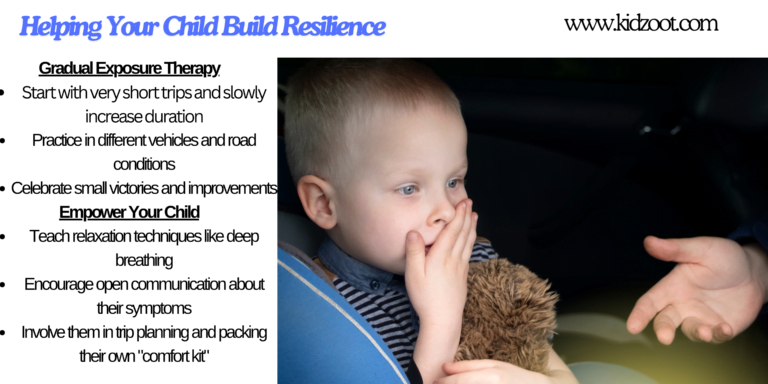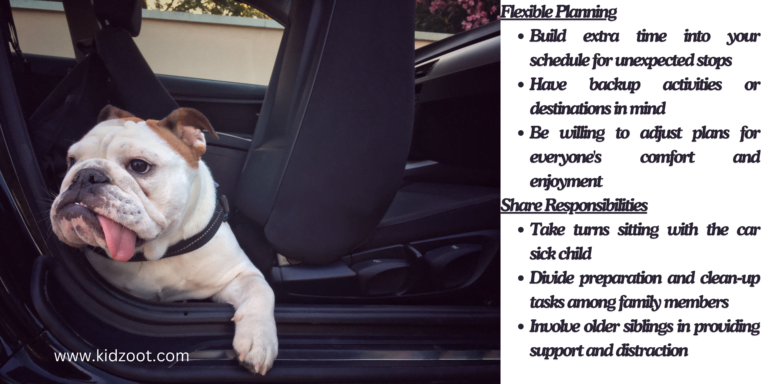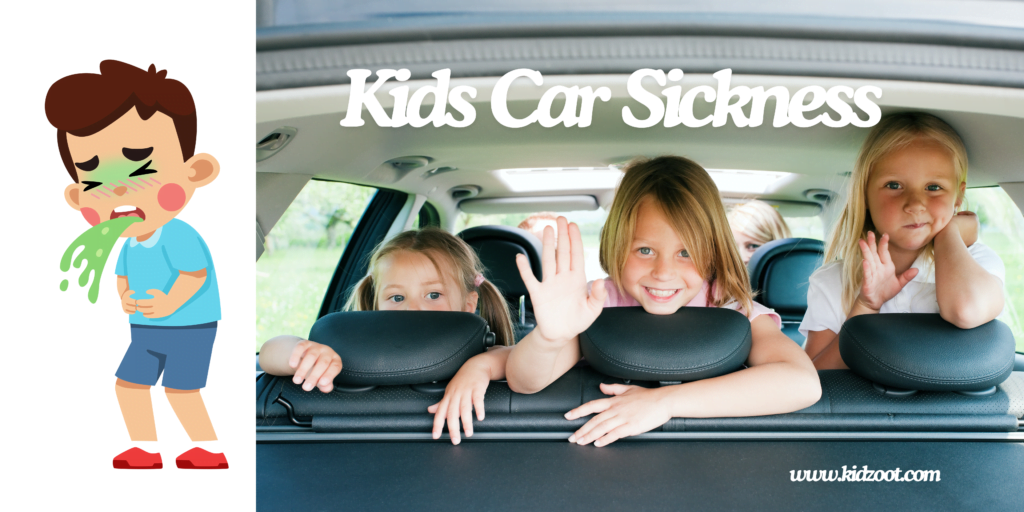Conquering Kids' Car Sickness: The Ultimate Guide for Stress-Free Family Travel
Table of Contents
1. Understanding the Enemy: What Causes Car Sickness in Children?
Car sickness, a common form of motion sickness, occurs when there’s a mismatch between visual inputs and the balance-sensing systems in the inner ear. This sensory conflict can lead to a range of unpleasant symptoms:
- Nausea and vomiting
- Dizziness and disorientation
- Cold sweats and paleness
- Headache and fatigue
Children between ages 2 and 12 are particularly susceptible to car sickness due to their still-developing sensory systems. Factors that can exacerbate the condition include:
- Inability to see the road ahead
- Reading or looking at screens while in motion
- Strong odors or stuffy environments
- Winding or bumpy roads
Understanding the root causes of car sickness is the first step in developing effective strategies to combat it. By recognizing the sensory conflict at play, parents can take targeted actions to reduce their child's discomfort.

2. Prevention is Key: Strategies to Keep Car Sickness at Bay
Optimal Seating and Positioning
- Choose the middle seat in the back row for the best view and smoothest ride
- Consider switching to a forward-facing car seat when age-appropriate
- Use a booster seat to improve the child’s line of sight
Create a Sensory-Friendly Environment
- Ensure good ventilation and maintain a cool temperature
- Minimize strong odors and use window shades to reduce visual stimulation
- Plan frequent breaks for fresh air and sensory reset
Smart Journey Planning
- Schedule longer drives during nap times or evenings
- Choose routes with straighter, smoother roads when possible
- Break up long trips into manageable segments
Mindful Eating and Drinking
- Avoid heavy meals before or during car trips
- Offer light, bland snacks like crackers or pretzels
- Maintain hydration with small, frequent sips of water
Proactive prevention is crucial in managing car sickness. By optimizing the travel environment and planning ahead, parents can significantly reduce the likelihood of symptoms occurring.

3. In-The-Moment Management: Tackling Car Sickness When It Strikes
Despite best efforts, car sickness may still occur. Here’s how to handle it effectively:
Recognize Early Warning Signs
- Sudden quietness or irritability
- Complaints of feeling “funny” or dizzy
- Increased yawning or sighing
- Paleness or sweating
Immediate Action Steps
- Safely stop the vehicle as soon as possible
- Get the child into fresh air
- Have them lie down or sit with head between knees
- Offer comfort and reassurance
- Provide a cool, damp cloth for forehead or neck
- Offer small sips of water if tolerated
Essential “Car Sickness Kit” Items
- Plastic bags and wipes
- Change of clothes
- Air freshener
- Waterproof seat covers or old towels
Quick recognition and response to car sickness symptoms can dramatically reduce their severity and duration. Always prioritize your child's comfort and safety over sticking to a strict travel schedule.

4. Long-Term Solutions: Helping Your Child Build Resilience
While many children outgrow car sickness, there are ways to help them build tolerance over time:
Gradual Exposure Therapy
- Start with very short trips and slowly increase duration
- Practice in different vehicles and road conditions
- Celebrate small victories and improvements
Empower Your Child
- Teach relaxation techniques like deep breathing
- Encourage open communication about their symptoms
- Involve them in trip planning and packing their own “comfort kit”
Create Positive Associations
- Plan fun activities or destinations at the end of car trips
- Use rewards or praise for successful journeys
- Focus on the excitement of family adventures
Explore Alternative Therapies
- Consider acupressure bands or ginger-based remedies
- Discuss the option of motion sickness medications with your pediatrician
- Investigate desensitization therapy or hypnosis for severe cases
Building long-term resilience to car sickness is a gradual process that requires patience and consistency. By empowering your child and creating positive experiences, you can help them overcome their motion sensitivity over time.

5. Family Dynamics: Maintaining Harmony on the Road
Dealing with car sickness can strain family relationships and travel plans. Here’s how to keep the peace and enjoy your journeys:
Open Communication
- Discuss potential challenges openly with all family members
- Set realistic expectations for travel times and stops
- Encourage empathy and support for the affected child
Flexible Planning
- Build extra time into your schedule for unexpected stops
- Have backup activities or destinations in mind
- Be willing to adjust plans for everyone’s comfort and enjoyment
Share Responsibilities
- Take turns sitting with the car sick child
- Divide preparation and clean-up tasks among family members
- Involve older siblings in providing support and distraction
Focus on the Positive
- Emphasize the joy of family time and new experiences
- Create fun travel traditions that don’t depend on continuous driving
- Document and celebrate successful trips, no matter how short
A supportive family environment can make all the difference in managing car sickness. By working together and maintaining a positive attitude, you can turn potential travel challenges into opportunities for family bonding.
In conclusion, while car sickness in children can be a formidable obstacle to family travel, it’s far from insurmountable. By understanding its causes, implementing preventive strategies, and having a solid plan for managing symptoms, you can help your child build confidence and resilience on the road. Remember that every child is unique, and what works for one may not work for another. Stay patient, remain positive, and don’t hesitate to seek professional advice if needed. With time and the right approach, you’ll be well on your way to creating lasting, joyful travel memories with your family.
Safe travels, and may your future adventures be filled with more smiles and fewer unexpected pit stops!
Kidzoot Team
Parenting tips and tricks from experts with years of experience in child rearing. Get practical advice and fun activities to enjoy with your kids from our team of parents and educators.

